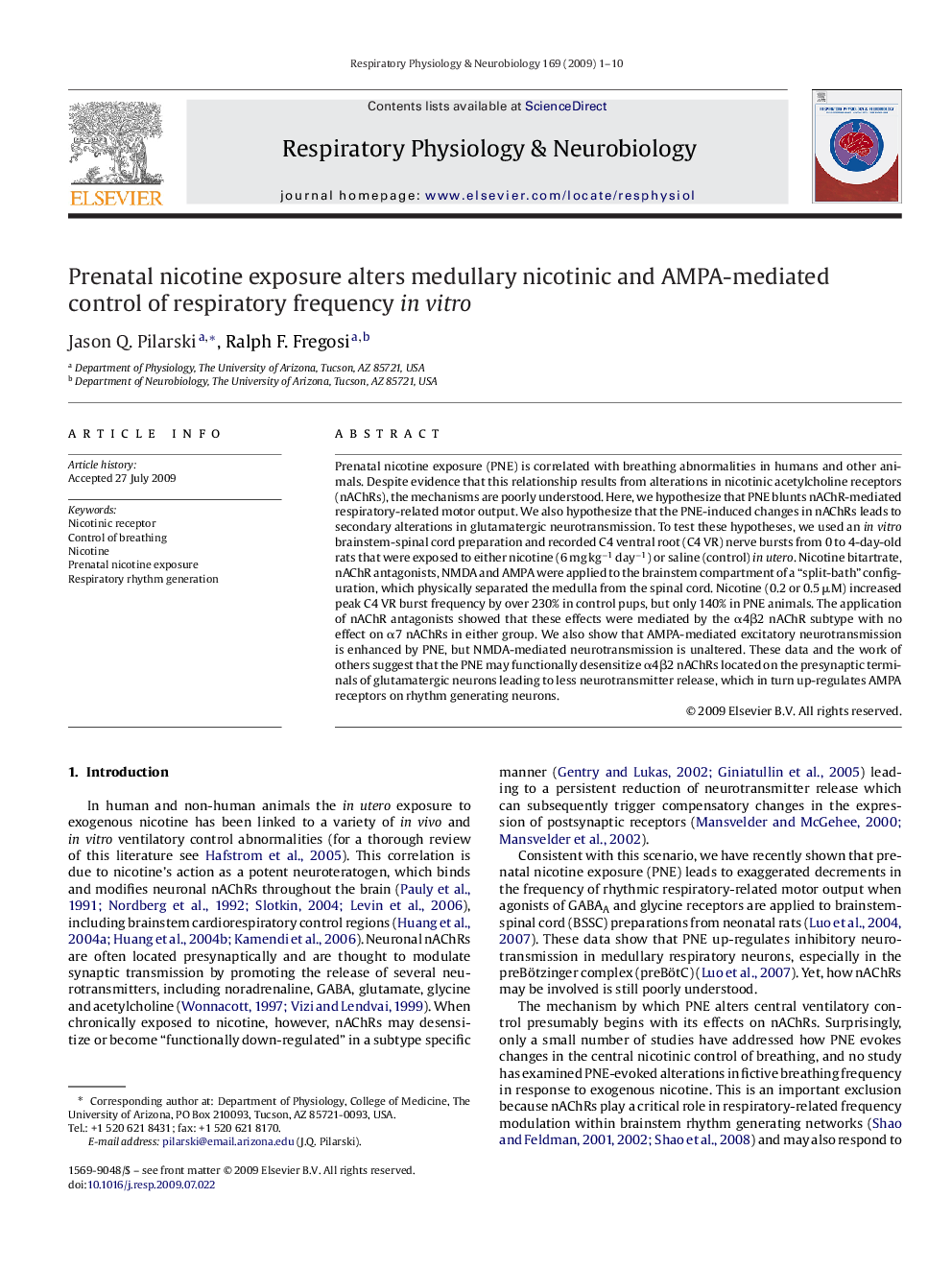| Article ID | Journal | Published Year | Pages | File Type |
|---|---|---|---|---|
| 2847797 | Respiratory Physiology & Neurobiology | 2009 | 10 Pages |
Prenatal nicotine exposure (PNE) is correlated with breathing abnormalities in humans and other animals. Despite evidence that this relationship results from alterations in nicotinic acetylcholine receptors (nAChRs), the mechanisms are poorly understood. Here, we hypothesize that PNE blunts nAChR-mediated respiratory-related motor output. We also hypothesize that the PNE-induced changes in nAChRs leads to secondary alterations in glutamatergic neurotransmission. To test these hypotheses, we used an in vitro brainstem-spinal cord preparation and recorded C4 ventral root (C4 VR) nerve bursts from 0 to 4-day-old rats that were exposed to either nicotine (6 mg kg−1 day−1) or saline (control) in utero. Nicotine bitartrate, nAChR antagonists, NMDA and AMPA were applied to the brainstem compartment of a “split-bath” configuration, which physically separated the medulla from the spinal cord. Nicotine (0.2 or 0.5 μM) increased peak C4 VR burst frequency by over 230% in control pups, but only 140% in PNE animals. The application of nAChR antagonists showed that these effects were mediated by the α4β2 nAChR subtype with no effect on α7 nAChRs in either group. We also show that AMPA-mediated excitatory neurotransmission is enhanced by PNE, but NMDA-mediated neurotransmission is unaltered. These data and the work of others suggest that the PNE may functionally desensitize α4β2 nAChRs located on the presynaptic terminals of glutamatergic neurons leading to less neurotransmitter release, which in turn up-regulates AMPA receptors on rhythm generating neurons.
